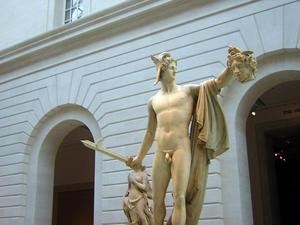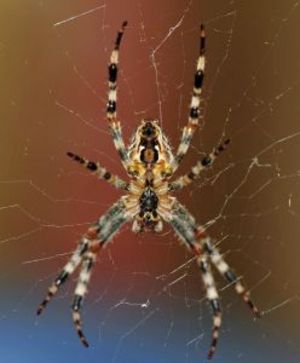I have often wondered how spiders can weave such magical looking webs. They are often times so precise that it boggles the mind. Other times they are so unique that it seems virtually impossible. Perhaps the answer to that question lies within the Greek myth of Athena and Arachne.
Although Athena always appreciated the cleverness of mankind, she did not like it when a human became too cocky about his or her abilities. Like many of the gods of Olympus, she took that as a personal affront to the gods.
When Athena learned that a young girl named Arachne boasted that she could weave tapestries to rival that of the goddess herself, she decided to check out the insolent mortal. Changing herself into an old woman, she visited the village of the maiden and made arrangements to meet the talented girl.
She watched Arachne for some time and was truly impressed with the girl’s talents. She started to turn and leave when the young girl started boasting that she taught herself how to weave and could now easily out match the skills of the goddess Athena.
Determined to teach the girl a lesson, the goddess challenged her to a contest. The maiden laughed that the old woman thought she could even begin to match her skills. Now angry beyond words, Athena threw off her disguise and unveiled herself to the people of the village.
However, instead of backing down in the sight of the goddess, Arachne grew bolder still, asking the goddess if she was ready to begin the contest. Athena, of course, agreed and the two women began to work.
Athena began weaving an intricate tapestry that depicted the story of a contest between herself and the god Poseidon over an unnamed city that both gods wanted for their own. She wove within the cloth an olive tree, which represented the symbol of peace. She proclaimed that as long as the city displayed the cloth, it would be forever wrapped in peace and tranquility.
Poseidon, on the other hand, offered the city a spring of water that he promised would flow for as long as the people lived within the city. One taste of the water was said to keep the drinker forever healthy, happy, and strong.
After the two gods completed their gifts to the city, the citizens were asked to vote for the gift that they felt was most precious. The men banned together and decided to vote for Poseidon’s water. The woman, however, banned together to vote for Athena’s olive tree.
Since there was one more woman in the village than there were men, Athena walked away the challenge winner. The city was named Athens in honor of the goddess.
Arachne, in her tapestry, wove stories of the god’s many deceptions. She focused on displaying how they often disguised themselves as mortals in order to trick mankind or to molest them through mating.
Once the tapestries were finished, the two women put it to the citizens to choose the best one. However, the people could not decide which tapestry they found most appealing.
Disgusted and angered, Athena ripped Arachne’s tapestry to shreds and then turned her anger toward the girl herself. Attacking the maiden, it appeared as though she might kill her but, instead, she placed a curse upon her.
With that, the girl’s body began to grow smaller and smaller. Her arms turned into another pair of legs and four more matching legs sprouted. Hunched over her legs, Arachne’s body began to change too until all that was left was basically stomach and legs with a miniscule head; no visible eyes or ears.
No longer a girl, Arachne became the very first spider. She and her descendants have continued to weave throughout the ages; developing fine webs of beauty and inspiration, but never again a tapestry that could rival that of a god.


